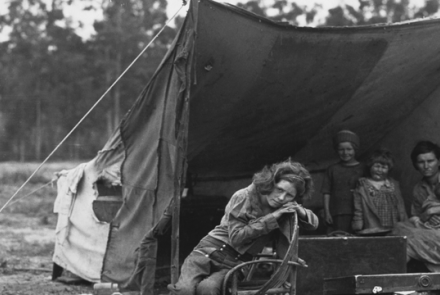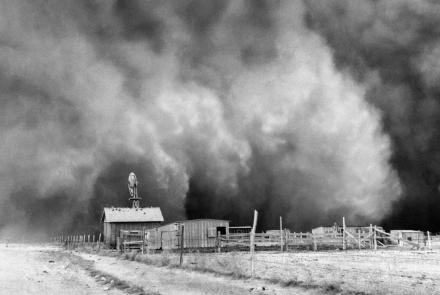
Reaping the Whirlwind
S1 E2 - 1h 55m
Black Sunday was only halfway through the decade-long crisis. The storms continued. The Great Depression still affected people. Government programs were instituted to help. Learn what FDR’s administration did to try to keep the southern Plains from becoming a North American Sahara desert. Find out why some residents finally decided they had to give up and move somewhere else and how some held on.
